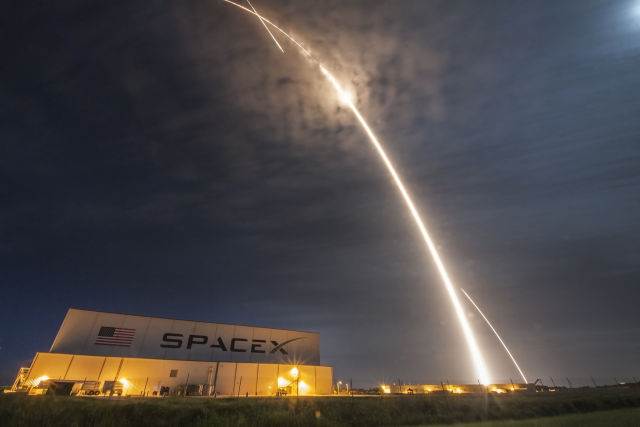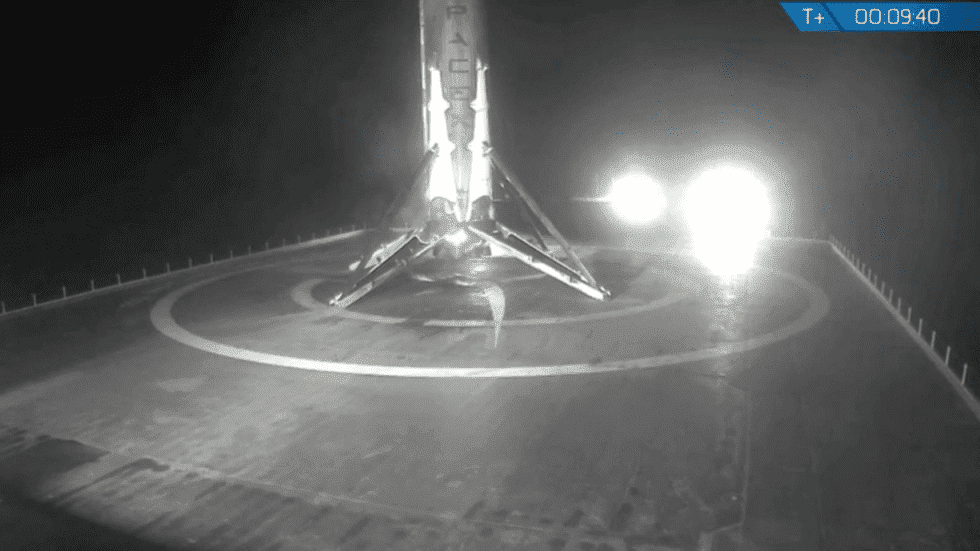
.
82
1:00am Sunday update: Just as its launch window opened early on Sunday morning, SpaceX’s Falcon 9 rocket launched from Florida and carried ts JCSAT-16 communications satellite payload into space. About 30 minutes later the rocket’s second stage successfully deployed the satellite in its high geostationary orbit, completing its mission.
Meanwhile, the company did equally well with the experimental landing of its first stage booster about 9 minutes after launch. After reaching orbit and deploying the second stage, three of the rocket’s Merlin engines performed a re-entry burn, nudging the booster back toward Earth. And as the commentators for the SpaceX launch advised viewers to look up the Tsiolkovsky rocket equation for “more on the mathematics” behind the energies of such a landing, the rocket itself came to a stop atop a drone ship in the Atlantic Ocean.
It marked the company’s fourth water-based landing out of five tries, suggesting that SpaceX is getting pretty darn good at these things.

Original post: SpaceX hopes to continue increasing the frequency of its rocket business with a Sunday launch. The two-hour launch window for the company’s Falcon 9 rocket opens at 1:26am ET on Sunday, as SpaceX endeavors to deliver the JCSAT-16 commercial communications satellite to geostationary transfer orbit. Weather conditions are 80 percent favorable for launch. (The webcast embedded below will begin about 20 minutes before launch).
After seven successful launches in 2016, SpaceX has already broken its previous mark for successful rocket missions during a calendar year, six. Sunday morning’s attempt comes a little less than one month after the last flight of the Falcon 9 on July 18, when the Dragon spacecraft delivered two tons of supplies to the International Space Station. Considering the company’s launch manifest through December, it is possible SpaceX will make a dozen or more flights of its Falcon 9 rocket in 2016, coming close to reaching its stated goal of a launching once every other week by the end of this year.
The other big question tonight again surrounds the company’s prospects for a successful return of its Falcon 9 first stage to Earth. Because the rocket will be delivering the satellite to an altitude of 35,800km above the equator, the first stage must reach a high velocity before releasing its upper stage and payload into orbit.
The Falcon rocket will therefore have to make a difficult drone ship landing at sea, aboard the Of Course I Still Love You, instead of having enough to fuel to return to a land-based site. As a result of the extreme return velocities and necessity to land at sea, the company says making a successful landing will be “challenging.”
Nevertheless, there are reasons for optimism. SpaceX has now returned five rockets successfully to Earth during the last eight months, including three of the last four drone ship attempts. In May, the company delivered the JCSAT 14 communications satellite in a similar mission profile, marking the first time a booster successfully landed on drone ship after geostationary transfer orbit flight.







